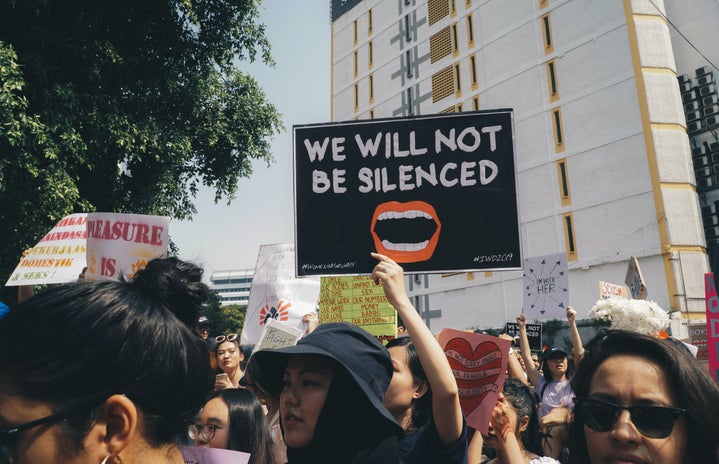“And it was not my fault, nor where I was, nor how I dressed,”
chanted hundreds of blindfolded Chilean women gathered in front of the country’s Supreme Court in November 2019 as a form of protest against patriarchal violence, r*pe culture, and gender-based police brutality. The participatory feminist performance piece known as “Un violador en tu camino” (“A r*pist In Your Path”) soon went viral, inspiring women all over the world to recreate the performance as a global call to arms to overthrow the patriarchy. This 21st century feminist anthem was created by Chilean performance collective LASTESIS, composed by multidisciplinary artists Daffne Valdés Vargas, Paula Cometa Stange, Sibila Sotomayor and Lea Cáceres Díaz.
Since then, one of their most ambitious projects up to date has been creating their very own Anthology of Feminist Narrative. Published in 2021 under Penguin’s DEBATE group, this collection features writings from a wide range of authors, essayists, poets, artists and activists whose work has influenced feminist movements throughout history.
Organized as a literary collage, this compilation is meant to reflect the collective’s own creative methodology as well as all the ways in which these texts may be presented while breaking free from the conventions of a linear structure. In this way, each of its works carry their own particular meanings, representing different cultures, territories and moments in time.
Retrieved from Instagram
The topics featured in these writings are equally diverse. In this anthology, you’re just as likely to come across feminist classics such as Simone de Beauvoir’s The Second Sex or Mary Wollfstonecraft’s A Vindication of the Rights of Woman, as you are to find contemporary texts written by the likes of Nigerian writer Chimamanda Ngozi Adichie, or transgender philosopher Paul B. Preciado. Besides fundamental feminist themes like gender equality and body autonomy, some of the featured works take to exploring more specific subjects, such as feminism and its relation to queer theory, technology, colonialism, and cultural and political spheres. As for the other formats included in the collection, the anthology showcases lyric poetry, photographs and descriptions of performance art pieces.
Because of its multidisciplinary and intersectional approach, LASTESIS describes it as a mise-en-scène of sorts, in which “different ideas are expressed in a variety of tones and directions, as we take our interdisciplinary perspective to a tangible plane.” In this way, the collective works to highlight a wide range of feminismos or feminist perspectives defined by different experiences, contexts and interpretations throughout the history of the movement. All things considered, the LASTESIS’ Anthology of Feminist Narrative is a great choice for those who are interested in learning about feminism and its influence on a variety of literary and artistic mediums.


